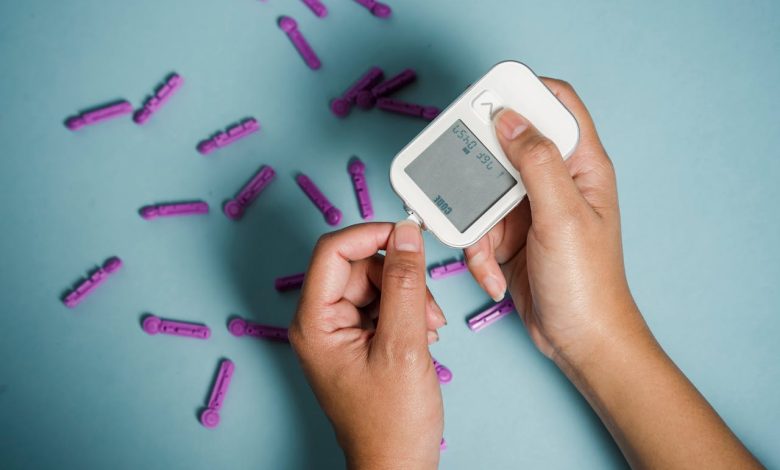If You Just Found Out You Have Prediabetes—Here Are 5 Things a Doctor Recommends You Do First

Receiving a prediabetes diagnosis can be unsettling, but it’s also a valuable opportunity. Prediabetes means your blood sugar levels are higher than normal but not yet in the diabetic range. The good news? Making lifestyle changes now can help reverse prediabetes and lower your risk of developing type 2 diabetes. Here are five doctor-recommended steps to take right away.
1. Focus on a Balanced Diet with Lower Carbohydrate Intake
What you eat directly impacts blood sugar levels. A balanced diet that emphasizes whole foods and limits processed carbs can help regulate your blood sugar and improve insulin sensitivity.
- Why It Matters: Refined carbohydrates, like white bread, sugary snacks, and soda, cause rapid spikes in blood sugar. Limiting these foods helps reduce blood sugar fluctuations and prevents overloading your body’s insulin response.
- What to Do: Emphasize whole foods like vegetables, lean proteins, whole grains, and healthy fats. Opt for complex carbohydrates such as quinoa, sweet potatoes, and whole grains, which release sugar more slowly.
- Tip from the Doctor: Avoid skipping meals, as this can lead to overeating and cause blood sugar spikes when you finally eat. Instead, aim for balanced, regular meals and snacks throughout the day.
2. Get Active—Aim for at Least 150 Minutes of Exercise per Week
Physical activity is one of the most effective ways to manage blood sugar levels and improve overall health.
- Why It Matters: Exercise helps your cells become more sensitive to insulin, which allows your body to better regulate blood sugar levels. Additionally, exercise aids in weight management, which is crucial for reducing the risk of diabetes.
- What to Do: Doctors recommend 150 minutes of moderate exercise per week, which can be spread over five days. Activities like brisk walking, cycling, and swimming are excellent choices.
- Tip from the Doctor: Start with small, attainable goals. If you’re new to exercise, begin with 10–15 minutes a day and gradually build up. Incorporating short bouts of movement, like taking the stairs or walking after meals, also helps.
3. Lose Extra Weight if Needed
If you’re carrying extra weight, especially around the abdomen, losing just a small amount can have a big impact on blood sugar control.
- Why It Matters: Excess weight, particularly around the waist, can lead to insulin resistance, where your body has a harder time using insulin effectively. Studies show that even a modest weight loss of 5–7% of your body weight can significantly lower your risk of developing type 2 diabetes.
- What to Do: Focus on gradual, sustainable weight loss. A combination of dietary changes and regular exercise is key.
- Tip from the Doctor: Rather than focusing solely on the scale, consider measuring waist circumference as a metric. A waist size of less than 40 inches for men and 35 inches for women is associated with a lower risk of type 2 diabetes.
4. Monitor Your Blood Sugar Regularly
Keeping tabs on your blood sugar levels helps you understand how your body responds to food, activity, and other factors.
- Why It Matters: Regular monitoring allows you to catch any unexpected spikes and adjust your lifestyle choices accordingly. It also provides a baseline that helps you see how diet and exercise changes are improving your health.
- What to Do: Ask your doctor how often you should monitor your blood sugar. Some may recommend using a glucometer for occasional checks, especially after meals, to see how your blood sugar responds.
- Tip from the Doctor: Keep a blood sugar log, noting the foods and activities around the time of each reading. This can help identify patterns and give you insight into your body’s unique response to different factors.
5. Manage Stress and Prioritize Sleep
While diet and exercise are often the primary focus, stress and sleep quality also play a significant role in blood sugar control.
- Why It Matters: Stress triggers the release of cortisol, a hormone that can increase blood sugar levels. Poor sleep can also disrupt insulin sensitivity, making it harder to regulate blood sugar.
- What to Do: Incorporate stress-relief practices into your daily routine, such as deep breathing exercises, meditation, or a relaxing hobby. Aim for 7–8 hours of quality sleep each night by maintaining a consistent sleep schedule and creating a calming bedtime routine.
- Tip from the Doctor: Avoid screens (phones, computers, TV) for at least 30 minutes before bedtime, as blue light can interfere with sleep quality. Instead, try reading or listening to calming music to help you wind down.
Final Thoughts: Take Action, One Step at a Time
A prediabetes diagnosis doesn’t mean diabetes is inevitable. With the right lifestyle changes, many people can reverse prediabetes and regain control of their health. While making these adjustments may feel overwhelming, remember that even small, consistent steps can lead to meaningful changes. By focusing on these doctor-recommended strategies, you can take charge of your health and reduce your risk of developing type 2 diabetes.



